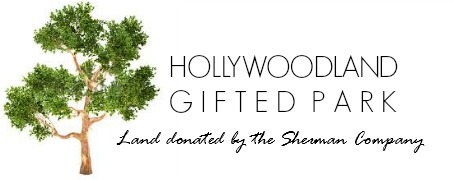• HGP (444 acres) the largest land gift to Griffith Park, was a unified part of the surrounding residential area since its original development in 1923. Protection was assured to the Hollywoodland property owners. HGP, it was not an integral, planned part of its surrounding communities. In contrast, Griffith Park ( 3,015 acres)was established in 1896 before any homes were developed or planned adjacent to this open space.
• HGP’s passive, open space was devoted to equestrian trails for exclusive, private use for its property owners; Griffith Park established its equestrian trails after the Griffith donation occurred.
• HGP has environmental elements that create a unique eco system not observed in Griffith Park.
• HGP borders the open space of the Lake Hollywood Reservoir ( an element to migratory animal use and climate patterns).
• HGP has a different type of geology than Griffith Park, a harder different type of granite.
• Roadways in HGP all have “use/utility easements” not found in Griffith Park.
• There is only one official, long established entrance into HGP (Canyon Drive) whereas Griffith park proper has many (Riverside, Vermont, Ferndale,134,TravelTown).
• The unique micro climate attributed to the geology and siting( ocean wind patterns)
creates a unique, indigenous flora / fauna and wildlife not originally found in
Griffith Park proper.
• The 1924 plantings through the Theodore Payne in conjunction with R. E. Page
( second landscape architect in the state of California) are not evident throughout
Griffith Park proper .
• There are historic granite walls ( historical designation #535) that border HGP not found in Griffith Park proper.
• The main communication tower ( a vital source of security and protection)for the city of Los Angeles has been exclusively located in the HGP area since its development.
• P-22 was first sighted in the HGP . He primarily lives within its passive confines.
